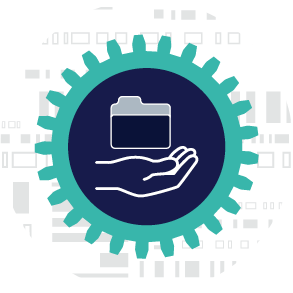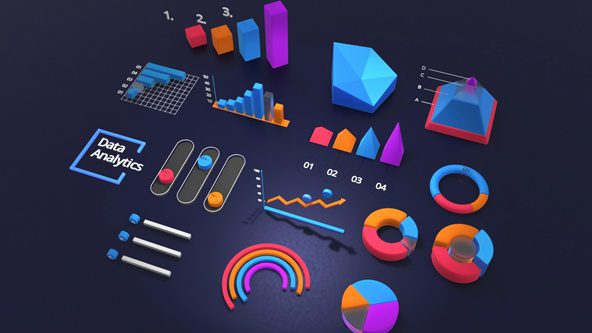Analytics and EBHR
HR and Big Data Rule 4 – Don’t worry where your analytics team sits
Nick Holley, CRF Director of Learning
Rule 4: Don’t worry too much where your data analytics team sits but make sure they are connecting the data to the business issues and the HR solutions.
It is important to understand where you are but once you have made the decision to go down the data analytics route where should the capability sit? My interviews identified three approaches:
- Within HR but as a separate team
- As an embedded capability in HR, not a separate team
- It doesn’t matter, so long as the right connections are made
1. IN HR BUT SEPARATE
In the first case the argument is that positioning your analytics within HR aids the interpretation and presentation of data, and that any separation will result in alienation of the HR leadership team and those who have to act on the insights. This approach is also driven by a concern about the ability of traditional HR people to be data rational.
“It’s easier for analysts to pick up an HR bias than to train up HR people to be analysts so the analyst team is entirely analysts vs HR people,” one HRD told me during my research. While another added: “I haven’t met enough HR people who are strong analytically.”

On Demand Courses
Enrol onto our On Demand courses, including our flagship Effective HR Business Partnering, and others in our HRBP Suite.
My worry is how much is it really about this and how much is it about the power and position of the HR function itself? If we don’t get this right, are we only one outsourcing step away from having no HR function?
2. EMBEDDED IN HR
The second view is that it shouldn’t be a separate activity at all but instead embedded in the HR business partner teams, who develop strong data analytic skills as a result.
One research interviewee said: “We need to move from HR being gatekeepers to the point where HRBPs can take questions and interrogate the data to find answers.”
It is less about the depth of data skills in one place and more about developing the whole team to get a lot out of the data. It is interesting to question how much the insight comes from the HRBP and how much from the data. Good HRBPs should know where the business issues are and therefore where to focus the data collection, but the danger is that if the HRBPs aren’t good enough they miss something.
Indeed, if the HRBPs in this model use data badly they can actually lead to the wrong conclusions and undermine the whole initiative. In particular, there is a fundamental difference between correlation and causality, and we saw a lot of evidence within HR of seeing the first and assuming the second.
“The idea is straightforward – ‘just because there is a connection between two variables, does not necessarily mean that one causes the other.’ This is very important in the world of Human Resources…HR has long pursued being able to tie its activities to positive business results. However, that pursuit will be fruitless until HR can understand which variables have that type of impact and can then subsequently statistically demonstrate the causal connection between HR activity and profitability.” (Bernstein, 2013)
This can lead to actions based on incorrect interpretation, leading – at best – to a loss of credibility from people who understand the difference, or – at worst – to value subtracting investments in the wrong actions. Whilst I have more sympathy for this approach I am concerned about the difference between the skills and attitude required to do the analysis, and the skills and attitude required to act on and communicate the insights. Is it realistic to expect these in the same person? Where I see this working, these data skills already exist within the HR business partner teams, often because they work in a business where data skills are valued and widespread.
CRF Learning’s latest On Demand Course Workforce Analytics and Storytelling will arm you with the practical tools to drive invaluable insights around business issues, influence decision making and drive organisational performance. Preview the course now, ahead of its August 2021 launch.
3. IT DOESN’T MATTER
In the third case the view is that an understanding of where the business is going and what factors will be critical in getting there should drive the decision. If the interfaces at a working level are driven by questions asked by the business, not by HR, then it doesn’t need to sit in HR. There is also a recognition that most of the skills required don’t exist in HR and traditional HR people could struggle to lead a team like this. Therefore, in some organisations there is a core analytics team that works across all support functions to make the necessary connections. Indeed, the skills required are rare and expensive and it may be unrealistic to expect HR to build the capability within itself. Equally there is a danger that unless there is one team, islands of data are created, and correlations aren’t identified.
In my view it isn’t about the power or position of the HR function but about ensuring data is being analysed well and insights are being connected to the right people and to effective action. It’s not about owning the data, but about sharing it in an appropriate way. The relationships, at the interface where business needs are translated into HR issues and then into data analytics needs, must work well.
Wherever it sits, it is critical to mandate collaboration so that you’re not just hoping it happens but ensuring it happens. The most successful organisations ensure there are permeable boundaries and that the right internal linkages are made not only within HR but also with other functions in the business such as finance, risk and compliance, sales and marketing and IT.





